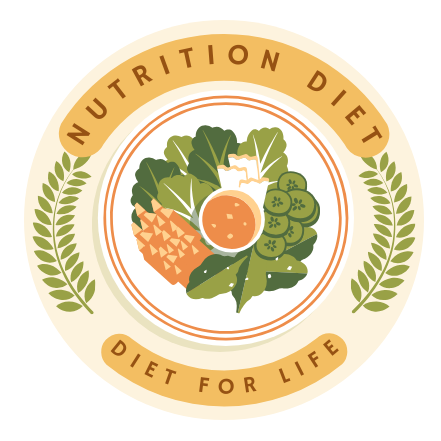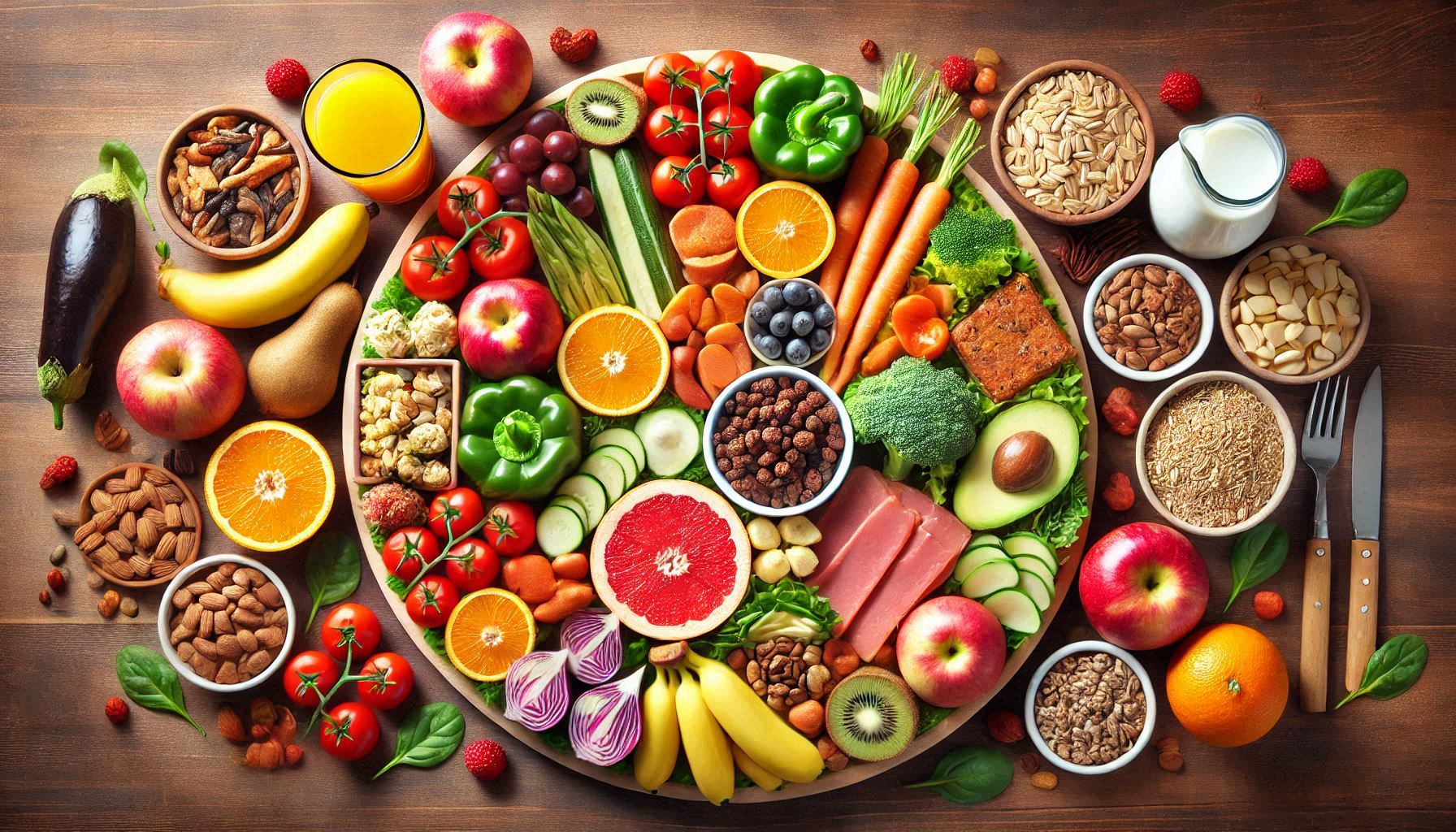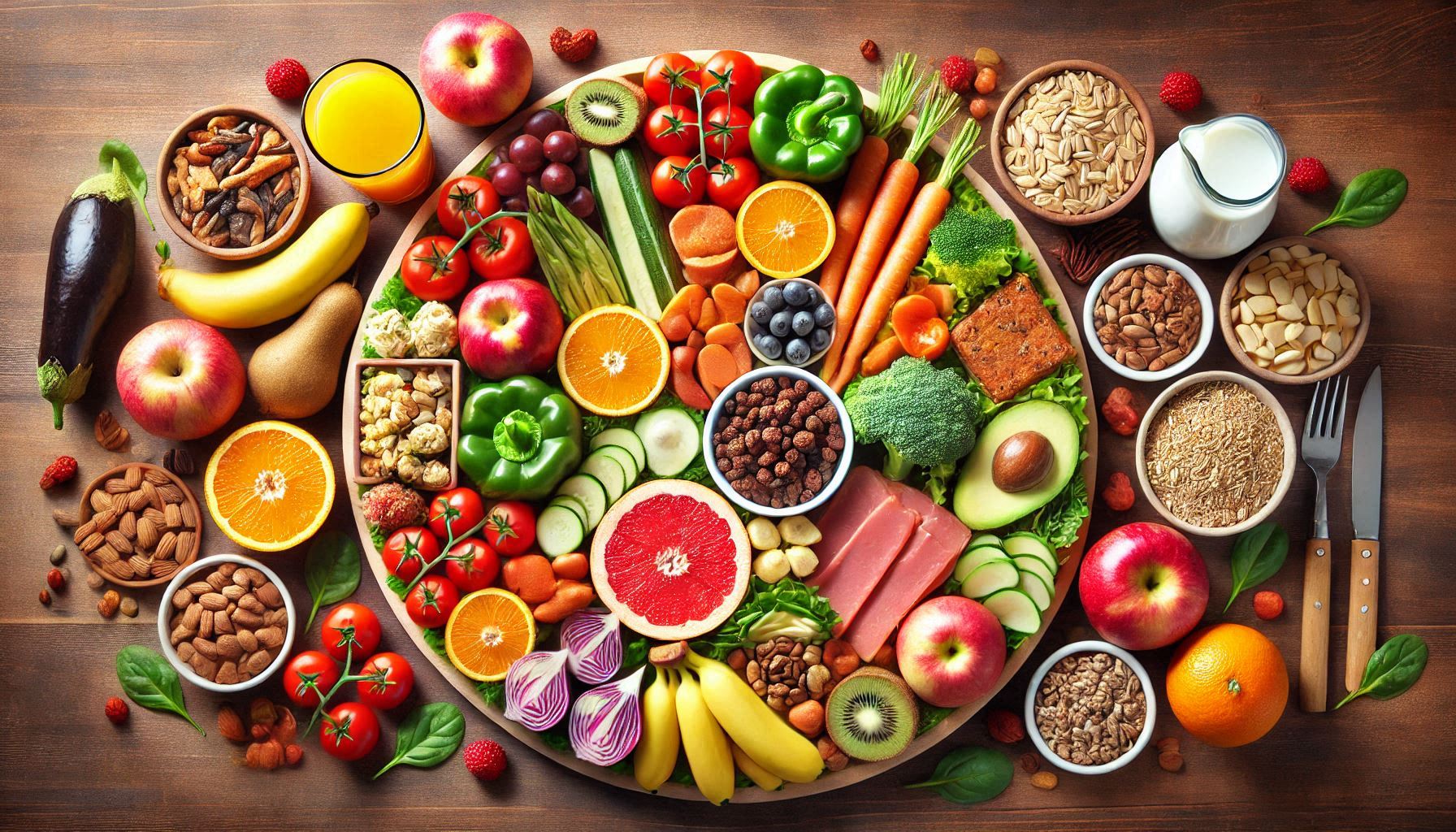Portion control is one of the most fundamental aspects of healthy eating, yet it is often overlooked in the quest for weight loss or weight management. In the context of an increasingly obesogenic environment, where oversized portions, high-calorie foods, and sedentary lifestyles have become the norm, controlling the amount of food consumed at each meal is one of the most effective strategies for managing caloric intake and maintaining a healthy weight. In fact, portion control can be the difference between maintaining a healthy weight and struggling with excess pounds or obesity.
This article explores the connection between portion control, caloric intake, and long-term weight management. By examining the physiological, psychological, and cultural factors that influence eating behaviors, we can better understand how portion control works and why it is critical for sustainable weight management. We will discuss the science behind portion control, the impact it has on calorie consumption, the strategies that can be used to implement portion control effectively, and how it contributes to overall health and wellness.
What Is Portion Control?
Portion control refers to the practice of managing the size of the food servings you eat, ensuring that they align with your dietary goals and nutritional needs. It does not require restriction of certain food types or the elimination of any specific food groups; rather, it focuses on controlling the amount of food consumed in relation to the energy needs of the body. Portion control encourages individuals to eat until they are satisfied, not full, and helps people recognize when they’ve had enough.
Unlike dieting, which often emphasizes restricting calories or certain food types (e.g., low-carb, low-fat, or vegan diets), portion control can be applied to any type of eating plan, from balanced diets to more specialized nutritional strategies. By simply adjusting portion sizes, individuals can manage their overall calorie intake without the need to follow rigid or restrictive eating rules.
The Importance of Portion Control in Modern Society
Portion sizes in modern society have dramatically increased over the past few decades. With the rise of fast food, large restaurant servings, and pre-packaged foods, many people are unknowingly consuming more calories than they realize. Studies show that portion sizes in restaurants, for example, have increased by as much as 60–100% over the past 40 years. This shift in portion size culture has contributed to the obesity epidemic in many parts of the world. According to the Centers for Disease Control and Prevention (CDC), more than 40% of adults in the United States are classified as obese, a condition strongly linked to excessive caloric intake.
Portion control is not just about cutting back on calories; it’s also about shifting eating habits toward more balanced, mindful, and health-conscious choices. In a world where food is constantly marketed in oversized quantities, portion control acts as a countermeasure that encourages individuals to be more aware of the quantity of food they consume.
Portion Control and Caloric Intake
Calories are the units of energy that the body derives from food, and every type of food has a different caloric value based on its composition of macronutrients—proteins, fats, and carbohydrates. For weight management, it is important to understand how caloric intake influences body weight.
- Caloric Surplus: If an individual consistently consumes more calories than the body needs for energy, the excess calories are stored as fat. Over time, this can lead to weight gain.
- Caloric Deficit: When an individual consumes fewer calories than the body requires, the body begins to use stored fat for energy, resulting in weight loss.
- Maintenance Calories: These are the calories required to maintain an individual’s current weight. This number varies based on factors like age, sex, metabolic rate, and physical activity level.
For most adults, a caloric intake of 2,000 to 2,500 calories per day is recommended for weight maintenance, though this number can vary significantly depending on individual circumstances.
How Portion Control Affects Caloric Intake
By reducing portion sizes, individuals can directly reduce the number of calories they consume. For example, simply cutting down on the portion of pasta or rice at a meal can lead to a reduction in total caloric intake. In a study published in the American Journal of Clinical Nutrition, researchers found that participants who ate smaller portions of high-calorie foods consumed fewer total calories, resulting in weight loss over time.
Portion control is particularly effective when combined with other healthy eating habits, such as focusing on nutrient-dense foods (foods that provide a lot of nutrients for relatively few calories) and avoiding overeating due to emotional triggers or stress.
The Science Behind Portion Control and Weight Loss
Energy Balance and Weight Management
The science behind weight management revolves around the concept of energy balance, which refers to the relationship between the calories consumed through food and drink, and the calories expended through physical activity and bodily functions. Maintaining a healthy weight requires that the number of calories consumed is balanced with the number of calories burned. When portion control is implemented, individuals are more likely to achieve this balance, as they can reduce the total number of calories consumed without necessarily having to change their diet entirely.
Weight gain occurs when there is a positive energy balance, meaning that more calories are consumed than expended. Conversely, weight loss occurs when there is a negative energy balance, meaning that fewer calories are consumed than expended. Portion control is one of the most effective ways to achieve and maintain this negative energy balance, especially in a world where larger portions are often equated with value or satisfaction.
Satiety and Hunger Cues
Satiety refers to the feeling of fullness or satisfaction after eating, while hunger refers to the physical sensation that triggers the need for food. Portion control is closely linked to the regulation of satiety and hunger. Research has shown that smaller portion sizes can help individuals feel satisfied with less food, preventing overeating. The key lies in understanding the body’s natural signals for hunger and fullness, a concept known as interoception.
When individuals eat larger portions, the body’s satiety signals can become blunted, leading to overeating. On the other hand, when portion sizes are reduced, the body learns to recognize when it is adequately nourished without needing to consume excessive amounts of food. By focusing on portion control, individuals can fine-tune their body’s hunger and fullness cues, leading to more mindful eating and better weight regulation.
The Role of Hormones in Appetite Regulation
Hormones also play a significant role in appetite regulation. Leptin, known as the “satiety hormone,” helps signal to the brain when the body has had enough to eat, while ghrelin, known as the “hunger hormone,” triggers feelings of hunger. When portion control is implemented, these hormones can function more effectively. For example, eating smaller portions of nutrient-dense foods helps stabilize leptin levels, signaling to the brain that the body is full and reducing the likelihood of overeating.
The Benefits of Portion Control for Weight Management
The benefits of portion control extend far beyond just weight loss. A balanced approach to portion control supports overall health and well-being. Some key benefits of portion control include:
- Sustainable Weight Management: Rather than following extreme diets or restrictive eating habits that are difficult to maintain, portion control offers a sustainable approach to weight management. It encourages individuals to eat a variety of foods in appropriate portions, which is more likely to be maintained in the long term. Portion control is also less likely to result in feelings of deprivation, making it easier to stick with.
- Improved Nutrient Intake: When individuals focus on controlling portions, they are more likely to prioritize nutrient-dense foods, such as fruits, vegetables, lean proteins, and whole grains. These foods are lower in calories and higher in essential nutrients, which can improve overall health while promoting weight loss.
- Increased Awareness of Eating Habits: Portion control helps individuals become more mindful of their eating habits. By measuring portions and paying attention to hunger and fullness cues, people develop a deeper understanding of their body’s true needs, helping them make healthier food choices in the future.
- Prevention of Overeating: The most obvious benefit of portion control is its ability to prevent overeating. By managing portion sizes, individuals can avoid consuming excess calories, which is crucial for maintaining a healthy weight. Additionally, portion control helps individuals avoid emotional eating, a common trigger for overeating.
Strategies for Effective Portion Control
Implementing portion control can be challenging, particularly in a world where food is often served in larger-than-necessary quantities. However, several practical strategies can make portion control easier to implement and maintain. These strategies include:
- Use Smaller Plates and Bowls: Research has shown that people tend to eat more when they are given larger portions. By using smaller plates and bowls, individuals can visually trick their brains into thinking they are eating more than they are. This simple technique can help reduce overall calorie intake without compromising meal satisfaction.
- Read and Follow Food Labels: Many packaged foods contain more than one serving per package. Reading food labels helps individuals become aware of the serving sizes and the number of calories they are consuming. This is particularly helpful for snacks and packaged meals, where portion sizes are often misleading.
- Practice Mindful Eating: Mindful eating involves paying attention to the sensory experience of eating—focusing on the taste, texture, and smell of food. Eating slowly and without distractions can help individuals better recognize when they are full, which reduces the likelihood of overeating. Mindfulness can also improve the overall enjoyment of food.
- Measure and Weigh Foods: For those who prefer a more precise approach, measuring and weighing foods can help ensure that portions are accurate. Using a food scale or measuring cups can help individuals keep track of the amount of food they are consuming, making it easier to manage caloric intake.
- Meal Planning and Preparation: Planning and preparing meals in advance can help individuals control portion sizes throughout the week. By portioning out meals ahead of time, individuals can avoid overeating and ensure that they are eating balanced meals that align with their nutritional needs.
- Avoid Eating from Large Containers: It’s easy to lose track of how much you’ve eaten when you are eating directly from a large container or family-style serving dish. Instead, serve yourself a portion on a smaller plate or bowl to help control the amount of food consumed.
- Be Aware of Emotional Eating Triggers: Many people overeat because of emotional triggers such as stress, boredom, or sadness. Being aware of these triggers and finding alternative ways to cope (such as exercise, meditation, or talking to a friend) can help prevent emotional eating and promote healthier portion control.
Overcoming the Challenges of Portion Control
- The Social and Cultural Influence on Portion Sizes: One of the biggest challenges to implementing portion control is the cultural and social normalization of large portions. In many societies, larger portions are often seen as an indication of generosity or value. Overcoming these social influences requires a shift in mindset. It’s important to remember that portion control is not about deprivation but about making more informed and conscious decisions about what and how much to eat.
- Psychological Barriers to Portion Control: For some people, psychological factors such as stress, anxiety, and emotional triggers can interfere with portion control. Overcoming these barriers requires not only adopting healthier eating habits but also addressing the emotional aspects of food consumption. Techniques such as cognitive behavioral therapy (CBT) can be helpful in addressing emotional eating.
- The Overabundance of Calorie-Dense Foods: Another challenge is the availability of calorie-dense foods, which are often marketed as value meals. These foods tend to be processed, high in fat, sugar, and sodium, and are often served in large portions. Choosing healthier alternatives and practicing portion control can help individuals avoid the temptation of these high-calorie foods.
Conclusion
Portion control is a crucial tool in managing caloric intake and achieving long-term weight management. By understanding the principles of portion control and adopting practical strategies to reduce portion sizes, individuals can significantly reduce their calorie consumption without sacrificing taste or enjoyment. Portion control not only helps with weight loss but also promotes better nutritional habits, increased awareness of eating behaviors, and the prevention of overeating.
Through mindful eating, measuring food, and making small adjustments to meal portions, individuals can develop sustainable habits that support overall health and wellness. While overcoming cultural, psychological, and environmental challenges may take time, the benefits of portion control are well worth the effort. By making conscious choices about portion sizes, people can take control of their health, manage their weight, and improve their quality of life.
SOURCES
Rolls, B. J., 2014. What is the role of portion control in weight management? International Journal of Obesity, 38(S1), S1–S8.
Young, L. R., & Nestle, M., 2012. Reducing portion sizes to prevent obesity: A call to action. The American Journal of Preventive Medicine, 43(5), 565–568.
Wansink, B., & Van Ittersum, K., 2013. Portion size me: Downsizing our consumption norms. Journal of the American Dietetic Association, 113(9), 1188–1190.
Schwartz, J., & Byrd-Bredbenner, C., 2006. Portion distortion: Typical portion sizes selected by young adults. Journal of the American Dietetic Association, 106(9), 1412–1418.
Freedman, M. R., & Brochado, C., 2010. Reducing portion size reduces food intake and plate waste. Obesity, 18(9), 1864–1866.
Hetherington, M. M., & Blundell-Birtill, P., 2018. The portion size effect and overconsumption: A biopsychosocial perspective. Physiology & Behavior, 193, 278–284.
Herman, C. P., & Polivy, J., 2014. Normative influences on food intake. Physiology & Behavior, 134, 44–50.
Pratt, C. A., Stevens, J., & Daniels, S., 2008. Childhood obesity prevention and treatment: Recommendations for future research. American Journal of Preventive Medicine, 35(3), 249–257.
Elfhag, K., & Rössner, S., 2005. Who succeeds in maintaining weight loss? A conceptual review of factors associated with weight loss maintenance and weight regain. Obesity Reviews, 6(1), 67–85.
Livingstone, M. B. E., & Pourshahidi, L. K., 2014. Portion size and obesity. Advances in Nutrition, 5(6), 829–834.
HISTORY
Current Version
November 23, 2024
Written By:
SUMMIYAH MAHMOOD


